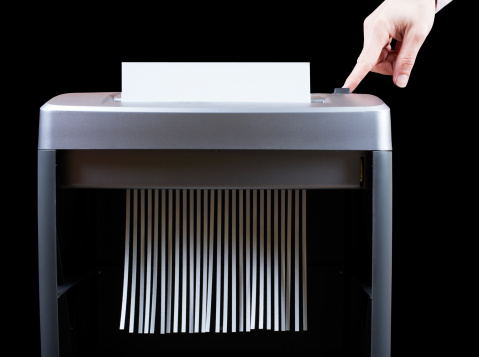 It’s important for divorcees to review and adjust their W-4 payroll withholding or start to make quarterly tax estimates following their divorce. Often, they are so relieved to have reached settlement, they fail to think about these housekeeping items.
If divorced in 2018, this is especially important if transferring taxable spousal maintenance. The payor spouse can likely change their payroll withholding to increase their net income. The payee spouse will need to withhold additional tax dollars on their salary or make quarterly estimated tax payments, to account for taxes on the spousal maintenance payments received.
If the payor spouse doesn’t adjust their W-4, they may not be able to meet their budget during the year and would probably receive a large tax refund when taxes are filed. If the payee spouse doesn’t adjust their W-4 or start quarterly estimated taxes, they could have a large tax liability when they file their return.
Even if there isn’t taxable spousal maintenance, individuals still may need to adjust their withholding. Things that can impact taxes and often require an adjustment are a change in their filing status, pre- tax payroll deductions (retirement contributions, health savings account, health insurance premiums), and itemized deductions such as real estate taxes and mortgage interest.
Making these adjustments now will help cash flow match what was projected during the divorce process and save the headache later of a tax surprise.
It’s important for divorcees to review and adjust their W-4 payroll withholding or start to make quarterly tax estimates following their divorce. Often, they are so relieved to have reached settlement, they fail to think about these housekeeping items.
If divorced in 2018, this is especially important if transferring taxable spousal maintenance. The payor spouse can likely change their payroll withholding to increase their net income. The payee spouse will need to withhold additional tax dollars on their salary or make quarterly estimated tax payments, to account for taxes on the spousal maintenance payments received.
If the payor spouse doesn’t adjust their W-4, they may not be able to meet their budget during the year and would probably receive a large tax refund when taxes are filed. If the payee spouse doesn’t adjust their W-4 or start quarterly estimated taxes, they could have a large tax liability when they file their return.
Even if there isn’t taxable spousal maintenance, individuals still may need to adjust their withholding. Things that can impact taxes and often require an adjustment are a change in their filing status, pre- tax payroll deductions (retirement contributions, health savings account, health insurance premiums), and itemized deductions such as real estate taxes and mortgage interest.
Making these adjustments now will help cash flow match what was projected during the divorce process and save the headache later of a tax surprise.  It’s important for divorcees to review and adjust their W-4 payroll withholding or start to make quarterly tax estimates following their divorce. Often, they are so relieved to have reached settlement, they fail to think about these housekeeping items.
If divorced in 2018, this is especially important if transferring taxable spousal maintenance. The payor spouse can likely change their payroll withholding to increase their net income. The payee spouse will need to withhold additional tax dollars on their salary or make quarterly estimated tax payments, to account for taxes on the spousal maintenance payments received.
If the payor spouse doesn’t adjust their W-4, they may not be able to meet their budget during the year and would probably receive a large tax refund when taxes are filed. If the payee spouse doesn’t adjust their W-4 or start quarterly estimated taxes, they could have a large tax liability when they file their return.
Even if there isn’t taxable spousal maintenance, individuals still may need to adjust their withholding. Things that can impact taxes and often require an adjustment are a change in their filing status, pre- tax payroll deductions (retirement contributions, health savings account, health insurance premiums), and itemized deductions such as real estate taxes and mortgage interest.
Making these adjustments now will help cash flow match what was projected during the divorce process and save the headache later of a tax surprise.
It’s important for divorcees to review and adjust their W-4 payroll withholding or start to make quarterly tax estimates following their divorce. Often, they are so relieved to have reached settlement, they fail to think about these housekeeping items.
If divorced in 2018, this is especially important if transferring taxable spousal maintenance. The payor spouse can likely change their payroll withholding to increase their net income. The payee spouse will need to withhold additional tax dollars on their salary or make quarterly estimated tax payments, to account for taxes on the spousal maintenance payments received.
If the payor spouse doesn’t adjust their W-4, they may not be able to meet their budget during the year and would probably receive a large tax refund when taxes are filed. If the payee spouse doesn’t adjust their W-4 or start quarterly estimated taxes, they could have a large tax liability when they file their return.
Even if there isn’t taxable spousal maintenance, individuals still may need to adjust their withholding. Things that can impact taxes and often require an adjustment are a change in their filing status, pre- tax payroll deductions (retirement contributions, health savings account, health insurance premiums), and itemized deductions such as real estate taxes and mortgage interest.
Making these adjustments now will help cash flow match what was projected during the divorce process and save the headache later of a tax surprise. 




 When divorcing, whether one spouse stays in the family home is often a pivotal decision. For most, there are several considerations that go into deciding whether to sell or stay. The tax impact of selling the marital home is unlikely to be at the top of that list, but with home values on the rise, it is worth understanding.
The current tax rules are quite favorable to people realizing a gain on the sale of their home. The IRS allows each taxpayer to avoid paying capital gains tax on the first $250,000 of capital gain on the sale of one’s residence. That means that a taxpayer filing “single” could exempt the first $250,000. A couple filing “married filing jointly” can avoid paying taxes on $500,000 in gains. The capital gains tax on a $250,000 gain can range from $0 to about $75,000 so it is worth it for divorcing couple to make sure they cover this in their divorce arrangements.
To qualify for the exemption, the IRS requires that the home meet the principal residence test, which is based on ownership, use and timing. For ownership, you need to have lived in the home for at least 2 years, (24 full months) in the 5 years before the sale. These 24 months do not need to be continuous. The use criteria require that the home be your principal residence for those 24 months. This can be an issue if one spouse was employed in another city, where they kept a second residence. One spouse meets the use test, but the other does not. Finally, the timing criteria requires that you have not excluded the gain on the sale of another home in the past 2 years.
Tax law gives divorcing couples some leeway in these criteria. Transfer of home ownership between divorcing spouses is not considered to be a taxable event by the IRS. If ownership is not transferred during the divorce, detailing the home ownership arrangement in the divorce decree is key to minimizing taxes when selling the home later. An ex-spouse that continues to be an owner of the home but does not live there, can still use the exclusion if there is written documentation in the decree that lays out this arrangement.
Dealing with home decisions during the divorce can be a complex. Be sure that in your home decision analysis, you are clear on your tax implications! And keep in mind that cabins, vacation homes and investment real estate generally will not meet the principal residence test, so they may have tax consequences when sold.
For a comprehensive review of your personal situation, always consult with a tax or legal advisor. Neither Cetera Advisor Networks LLC nor any of its representatives may give legal or tax advice.
When divorcing, whether one spouse stays in the family home is often a pivotal decision. For most, there are several considerations that go into deciding whether to sell or stay. The tax impact of selling the marital home is unlikely to be at the top of that list, but with home values on the rise, it is worth understanding.
The current tax rules are quite favorable to people realizing a gain on the sale of their home. The IRS allows each taxpayer to avoid paying capital gains tax on the first $250,000 of capital gain on the sale of one’s residence. That means that a taxpayer filing “single” could exempt the first $250,000. A couple filing “married filing jointly” can avoid paying taxes on $500,000 in gains. The capital gains tax on a $250,000 gain can range from $0 to about $75,000 so it is worth it for divorcing couple to make sure they cover this in their divorce arrangements.
To qualify for the exemption, the IRS requires that the home meet the principal residence test, which is based on ownership, use and timing. For ownership, you need to have lived in the home for at least 2 years, (24 full months) in the 5 years before the sale. These 24 months do not need to be continuous. The use criteria require that the home be your principal residence for those 24 months. This can be an issue if one spouse was employed in another city, where they kept a second residence. One spouse meets the use test, but the other does not. Finally, the timing criteria requires that you have not excluded the gain on the sale of another home in the past 2 years.
Tax law gives divorcing couples some leeway in these criteria. Transfer of home ownership between divorcing spouses is not considered to be a taxable event by the IRS. If ownership is not transferred during the divorce, detailing the home ownership arrangement in the divorce decree is key to minimizing taxes when selling the home later. An ex-spouse that continues to be an owner of the home but does not live there, can still use the exclusion if there is written documentation in the decree that lays out this arrangement.
Dealing with home decisions during the divorce can be a complex. Be sure that in your home decision analysis, you are clear on your tax implications! And keep in mind that cabins, vacation homes and investment real estate generally will not meet the principal residence test, so they may have tax consequences when sold.
For a comprehensive review of your personal situation, always consult with a tax or legal advisor. Neither Cetera Advisor Networks LLC nor any of its representatives may give legal or tax advice. 



